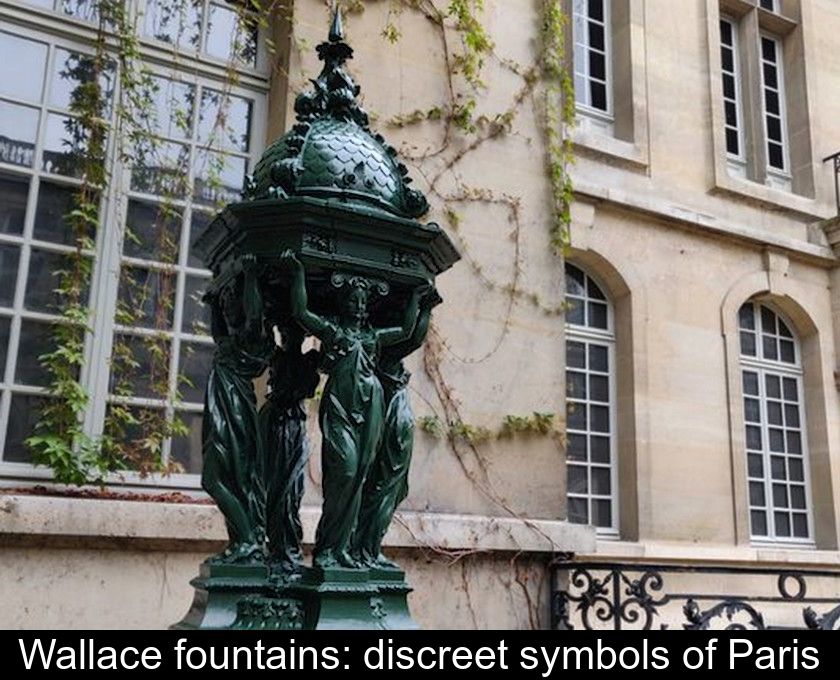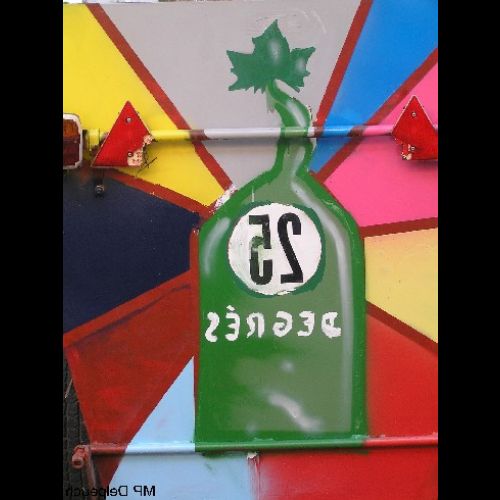Wallace Fountains: Discreet Symbols Of Paris
They are so much a part of the Parisian scenery that you can pass by them without seeing them... And yet, Wallace fountains are as beautiful as they are useful since they have been giving free drinking water to the inhabitants of the capital for 150 years. Here are 5 things to know about these discreet symbols of the city of Paris.
1- They have been delivering drinking water in Paris since 1872
Wallace fountains have just celebrated their 150th anniversary. The first of them was indeed installed on boulevard de la Villette in Paris on July 30, 1872.
The installation of these fountains is in line with the great changes wanted by Napoleon III in the Parisian landscape, with the public benches designed by Davioud and the Morris columns.
Their dark green color was not chosen by chance: the City of Paris wanted to bring an air of nature to the capital after the bloody siege of the capital during the Franco-Prussian war and then the Commune in 1870 and 1871.
To celebrate the 150 years of these fountains, the City of Paris installed in the gardens of the Carnavalet Museum an original model from 1872 that was previously located at Place Denfert-Rochereau. This model has thus entered the collections of the museum dedicated to the history of the capital.
2- They are named after an English philanthropist
Even if the Wallace fountains have become a symbol of the city of Paris, they owe their name to a philanthropist... English!
This wealthy heir, who resided in the Bagatelle castle in the Bois de Boulogne, made donation to the City of Paris of 50 fountains inspired by the drinking fountains of London.
Sir Richard Wallace wanted to allow the poorest Parisians to benefit from free drinking water as an alternative to alcohol, which was then more readily available.
For this project, he called upon a sculptor of the time, the Nantes-based Charles Auguste Lebourg, who imagined a fountain model that was both utilitarian and aesthetically pleasing.
3- They are decorated with caryatids representing 4 virtues
If Wallace fountains are still part of the Parisian heritage today, it is also because they are decorated with a particularly refined pattern that embellishes the streets of Paris.
Sir Richard Wallace, who wished to spiritually nourish the inhabitants of the capital, had these fountains adorned with cariatids representing 4 virtues: kindness, charity, simplicity and sobriety.
These four allegorical statues also had the advantage of preventing horses from using these fountains as watering holes.
The large model with caryatids consists of 3 blocks and weighs a total of 600 kg! It is, with the wall-mounted model that can still be seen near the entrance of the Jardin des Plantes in the 5th arrondissement, the only two original models designed by Wallace and Lebourg.
After 1872, the City of Paris acquired other less expensive fountains (hydrants and column models) which also bear the name of Wallace in homage to the English philanthropist.
4- These fountains have evolved with the times
The Wallace fountains, which have just celebrated their 150th anniversary in the streets of Paris, are not frozen in time!
Over the course of their history, they have undergone several changes, including the removal of the pewter cup that was once chained to each fountain. The goblet was removed in 1952 for hygienic reasons.
More recently, in 2011 and 2016, new fountain colors have appeared on Parisian streets: red, white, blue and even pink! The capital now has 7 colorful fountains, located in the 13th and 20th arrondissements.
Not only do these new shades make it easier to notice the presence of a fountain in the landscape, but they are also durable because they are applied with anti-erosion paint.
5- Their success has never waned
Since their appearance in the capital in 1872, 107 Wallace fountains have been installed in Paris.
Among them, only two examples are classified as historical monuments: the two fountains that are located on the Place Louis Lépine on the flower market of the Ile de la Cité.
Moreover, the success of these fountains has gone far beyond the borders of the French capital. The GHM company still uses the original Wallace and Lebourg mold to meet orders from all over the world.
They can be seen in public spaces in cities as diverse as Rio de Janeiro in Brazil, San Sebastian in Spain or Granby in Quebec. Even more amazingly, some private collectors have this Parisian fountain model built for them!






